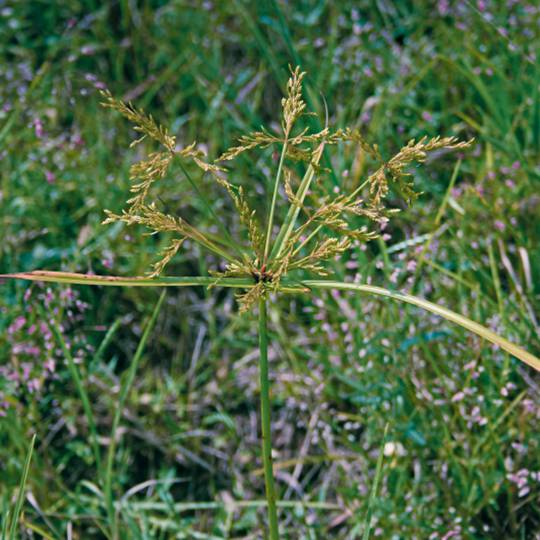
Some people may not consider yellow nutsedge (cyperus esculentus) to be a weed since it’s an edible perennial plant. There’s a small sack, or tuber, that grows underground and stores nutrients that you can grow for food. That’s why you may hear this plant also referred to as Earth almond, nut grass, chufa sedge, or tiger nut sedge.
Yellow Nutsedge Signs and Symptoms
Looking out over your lawn, you’ll be able to tell yellow nutsedge apart from your healthy grass by noticing the thicker, taller blades and small yellow flowers that bloom from it. Once this weed is found in your lawn, it’s only a matter of time before it takes over. This highly intrusive sedge-weed can spread across your yard fast, disrupting the smooth, green lawn you desire.
Yellow Nutsedge Prevention
Untreated, yellow nutsedge can spread quickly and is considered to be one of the more difficult weeds to remove, due in part to the tiny tubers that grow underneath. In order to help prevent the spread of nutsedge throughout your lawn, make sure to clean any tools and equipment used in the removal process–parts of the plant can stick to the equipment and then appear anywhere else these tools are used. One of the best ways to guard against unwanted weeds is to call in the professionals. Cardinal Lawns can help control the yellow nutsedge in your yard and get it back to green again.
Need Help with Yellow Nutsedge?
Call Cardinal Lawns today at 614-808-4446 and let's talk about how we can help treat for Yellow Nutsedge and other common Ohio lawn weeds.
Get a Free Quote